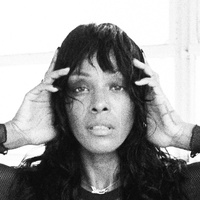On the future of work, learning, time, and space
Prelude
Teal Process & Company is always an open question. Formed by Yatú Espinosa and Norm O’Hagan, Teal moves between concepts, experiments, and artifacts — exploring the digital, physical, and theoretical — on topics including education, work, and infrastructure.
Conversation
On the future of work, learning, time, and space
Teal Process & Company discuss a new model of space & time, a theory on careering journeys, and how they came and continue to be.
As told to Laurel Schwulst, 3388 words.
Tags: Art, Design, Technology, Education, Collaboration, Process.
Tell me about your phrase, “work is a feeling.”
Yatú: We believe that work is a feeling that emerges from an activity. For example, sometimes people like to listen to certain types of music that gets them in the mood to work.
Norm: Work isn’t just one feeling. There are different types of work feelings. We recommending first figuring out how you want to feel when you work, or when you’re being “productive.” Then, you create an infrastructure or environment that supports that work feeling.
How does Teal like to feel when it works?
Norm: I like to feel “open and a little lost.” We believe you have to not know where you’re going in order to find somewhere new. A lot of the things we work on take a while to find themselves. So, it’s normal that we’re lost for a while.
Yatú: Personally, I like to feel “cozy.” Traditional time systems do a good job of making sure you don’t feel cozy. That’s why we had to invent our own time and space.
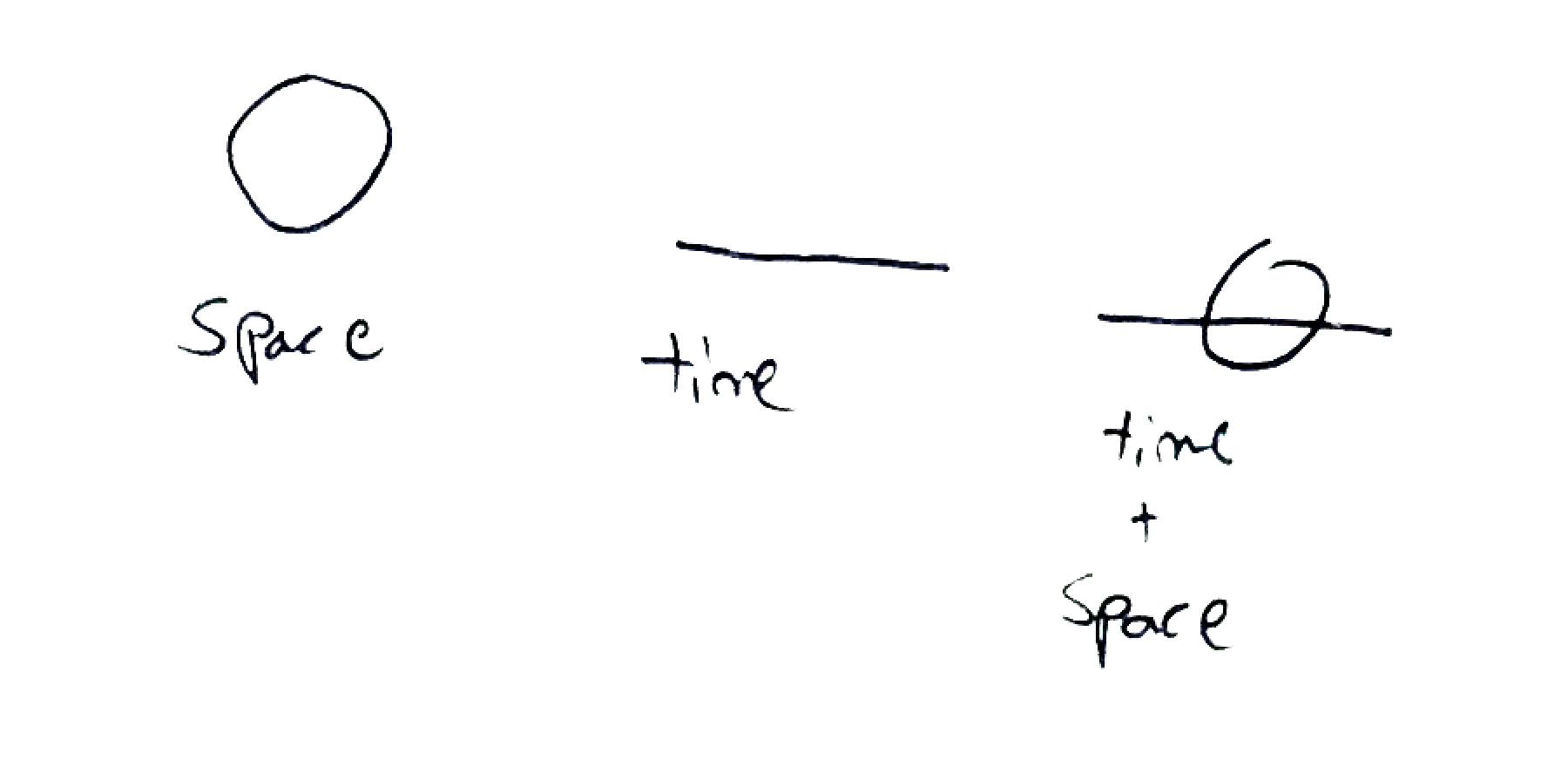
That reminds me of your clocks. Why do you cover all the clocks in your house?
Norm: We believe you shouldn’t have to watch the time. When we allow ourselves to be sensitive, we believe every human can innately feel time and space.
I equate covering the clocks up to a social media detox. In the same way you detox yourself from the habit of checking your phone, you can detox yourself from the habit of checking the time. After I covered the clocks up, I would catch myself looking for the time and realizing, “I don’t actually need to know the time after all.”
How did you begin questioning time?
Norm: We moved into the apartment we share in 2020, at the beginning of the pandemic. We put a lot of time, energy, and thought into our physical space, which was new to us then. Eventually, we realized time was just as important as space — the two are completely intertwined to create an environment.
Yatú: When the days of the pandemic felt blurred together, we would say, “This all feels like one day.” We began by defining our own “paragonday” — our ideal sense of time. “Paragon” means ideal, so “paragonday” is an ideal day.
So your time system, “Paragonday Systems,” is about feeling time?
Yatú: Yes. It’s important each person defines paragonday for themselves.
For me personally, paragonday feels like there’s a sense of abundance. People sometimes call this vacation, but I believe most people plan their vacations too much. Paragonday is whatever you want it to be. It can be a massage. It could be you going to visit a waterfall. It could simply be you closing your eyes and thinking peacefully. Whatever it is, it’s important to intentionally decide an ideal environment for you to enjoy time.
Paragonday sounds dreamy. What are the other ways to pass time?
Yatú: In Paragonday Systems, NP1 stands for “Non-Paragonday 1” which is a period of time that’s often filled with obligations. For a lot of people NP1 maps onto the work week, or Monday through Friday. Then there is NP2 or “Non-Paragonday 2” which is a period of time that isn’t tied to the obligations of “work.” The unplanned space of NP2 typically maps onto the weekend.
You can “parachute into Paragonday” from NP1 or NP2. Parachuting is the transitional period. It’s a mental parachute; you do it in your head. You land whenever you’re ready. You grab both handles of the parachute and you go, “pshhhhhhuuu”! The parachute is our way of making an intentional choice to enter your ideal sense of time.
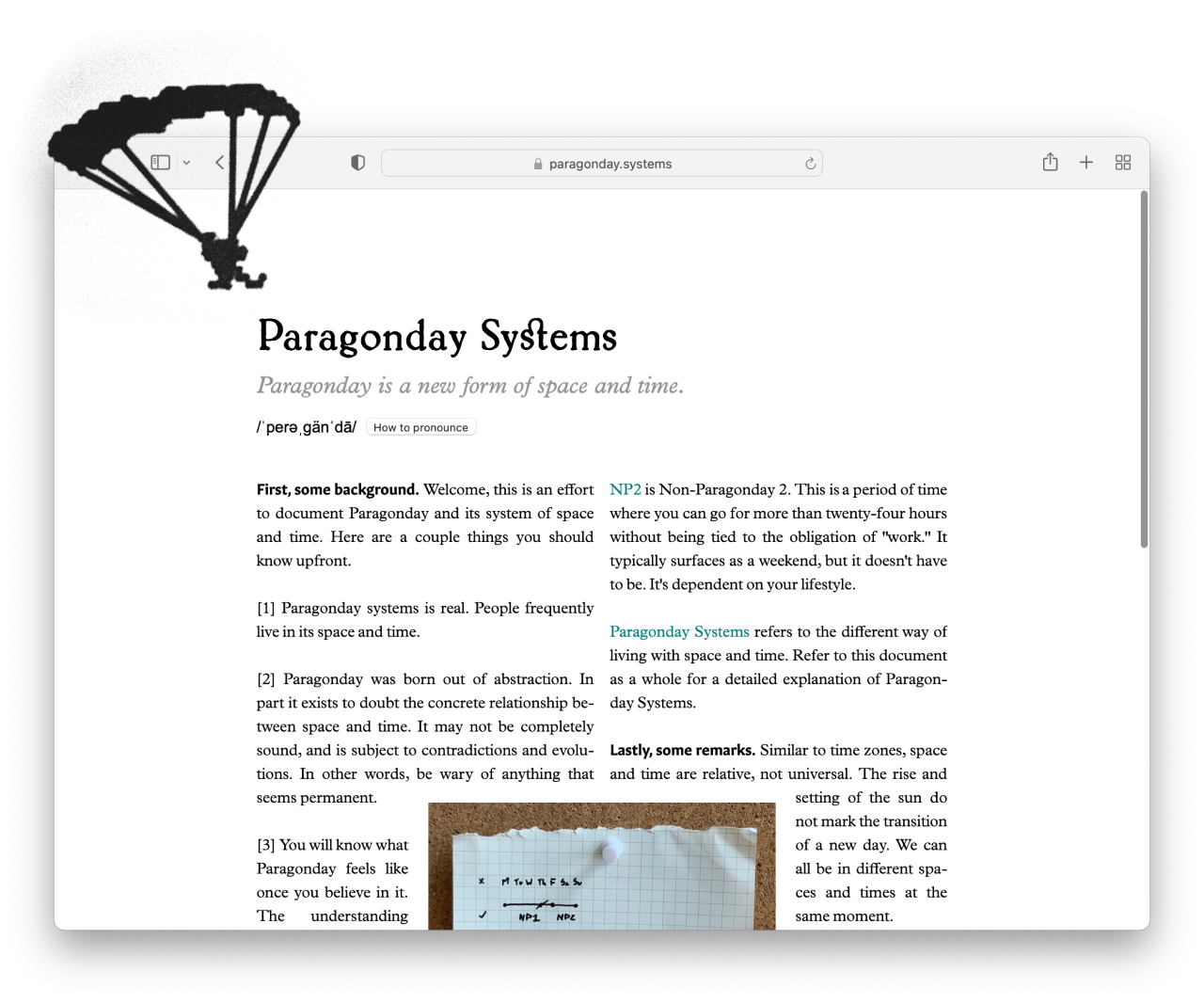
Norm: Our date format goes like this: “Season Day, Year”. For example, the theoretical artifact we made for Paragonday Systems, accessible at http://www.paragonday.systems, was created on Spring Paragonday 3, 2020. Each time you enter a new Paragonday, you increment the count.
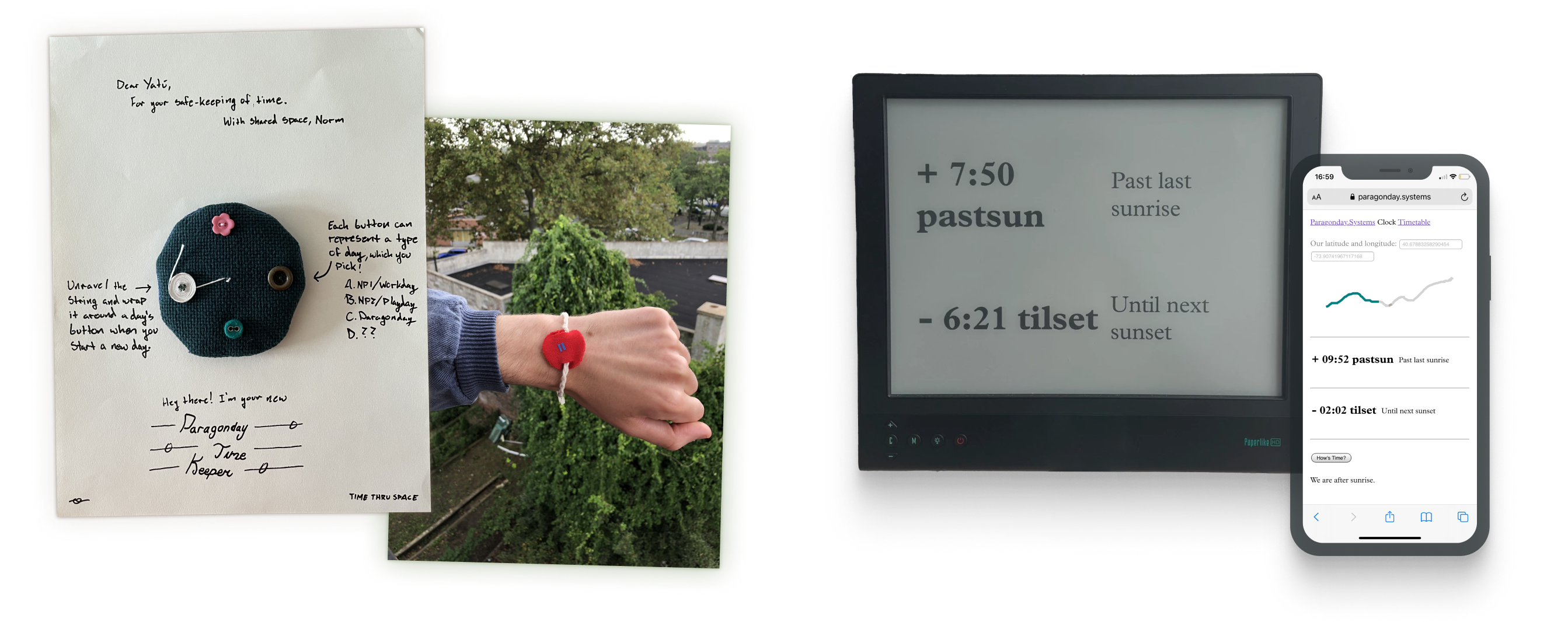
How did you two meet?
Yatú: We went to the same school. Our relationship became strong when we worked together on a hackathon for our college.
Yatú & Norm: We bonded over a shared mission to inspire other students to organize their own hackathons to create a broader educational network.
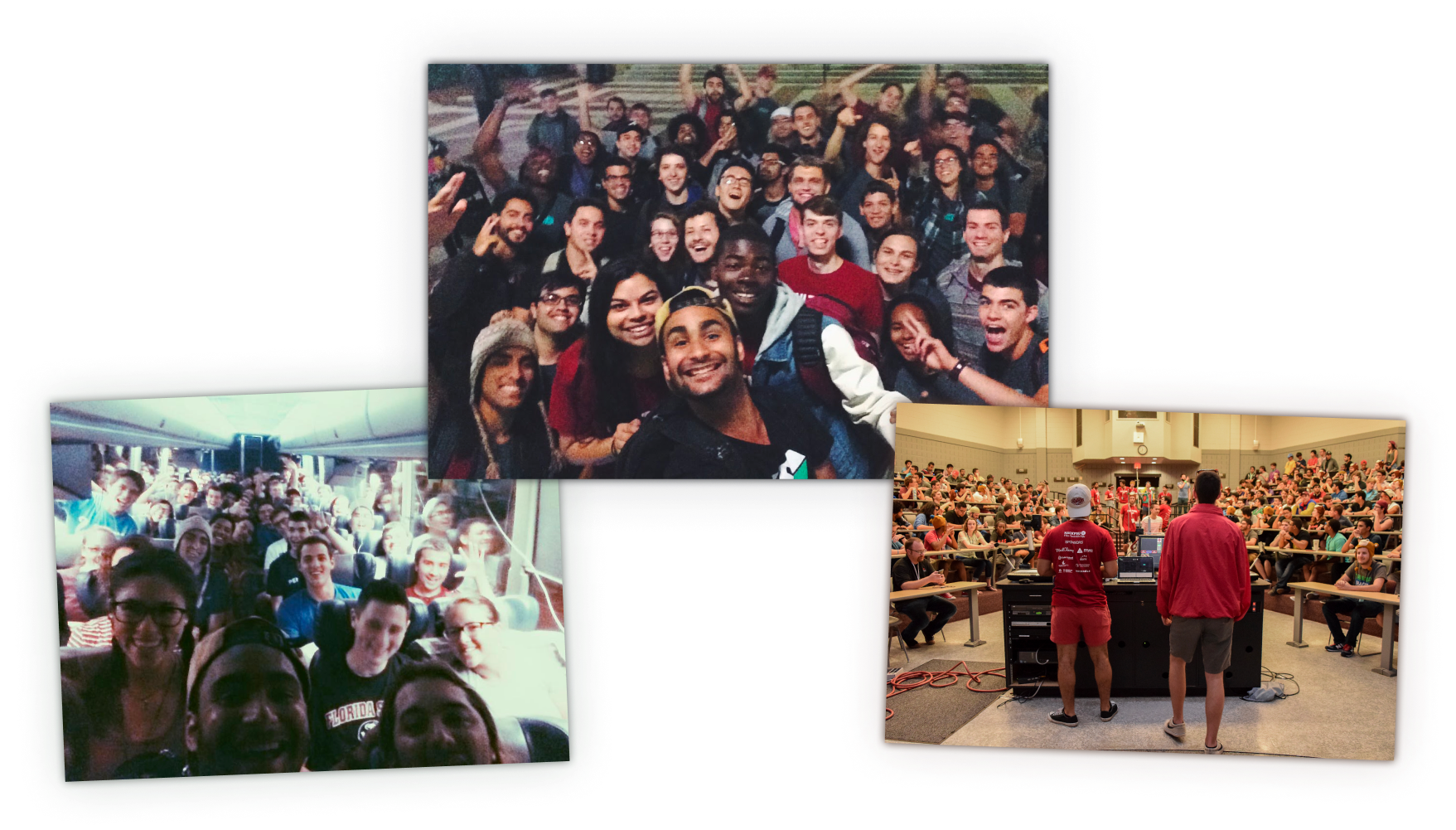
For the record, what’s a hackathon?
Yatú: Hackathons are those events where people quickly and collaboratively create something, usually technological, over a short period of time like a weekend. Eventually, our goal became broadening the idea of what hacking is.
We wanted to give people the opportunity to explore things. Eventually, we organized hackathons that allowed people to come together to create anything they wanted — with less tech focus. At our university, we didn’t have design classes. And there weren’t many designers who showed up to the hackathons at first.
Norm: Eventually, more designers popped up. We also brought in local professional designers to give workshops.
Yatú: It was a funny moment — people were writing articles about diversity — using a photo of our hackathon as an illustration. But we didn’t even try to be that.
We simply tried to create an environment that welcomes anyone to explore anything — focusing bringing in all the disciplines. We did this by attracting a wider audience and fostering an encouraging environment towards building. The rest followed naturally.
Norm: Yatú and I had tons of conversations about why we were doing the things we were doing, and that’s how we were able to mind meld and grow.
Shortcomings in your educations have been extremely motivating to both of you.
Norm: Yeah, we learned a lot. One week, we both almost dropped out. I basically failed out of my major. It’s funny because we were working with administrators at the school to organize hackathons. We talked often with heads of departments but were simultaneously failing out of their classes.
Yatú: We ran multiple organizations on campus. We truly believed in the motto, “learn by doing.” Our groups bonded through friendships, travel, and the desire to learn. We created an environment where anyone could appoint themselves to lead any exploration.
Norm: We did a lot of work for anyone to have supportive educational infrastructure because we knew what it’s like not to have that.
How do each of you define Teal?
Yatú: We have a shared understanding that Teal is always an open question.
Norm: Yeah. In trying to describe it to people, it can also be called an “art group” or … But once you start trying to define it in any kind of way, it loses the vastness. The vastness is hard to communicate.
Yatú: At first, I didn’t want to define Teal. But Norm said it was important to define it.
The vastness is Teal’s character. Teal is sometimes considered “the gray of color.”
Norm: We added “Process & Company” to the name because we wanted to communicate how things came to be through documentation (“Process”), and we also wanted it to be real and legitimate (“Company”).
Yatú: The other meaning of “& Company” is the “company you keep” — being intentional about the people you share time with.
It gets easier to describe the things inside of Teal.
One of Teal’s concepts I’m especially curious about is “careering.”
Norm: Yeah! We like to talk about how the word “career” is both a noun and a verb. Most people know about “career” the noun, which means “an occupation undertaken for a significant period with opportunities for progress.” But “career” is also a verb.
Yatú: As a verb, “career” means “to move swiftly and in an uncontrolled manner in a specified direction.”
Norm: Thinking about career as a verb helps introduce a more fluid way of exploring throughout one’s working life.
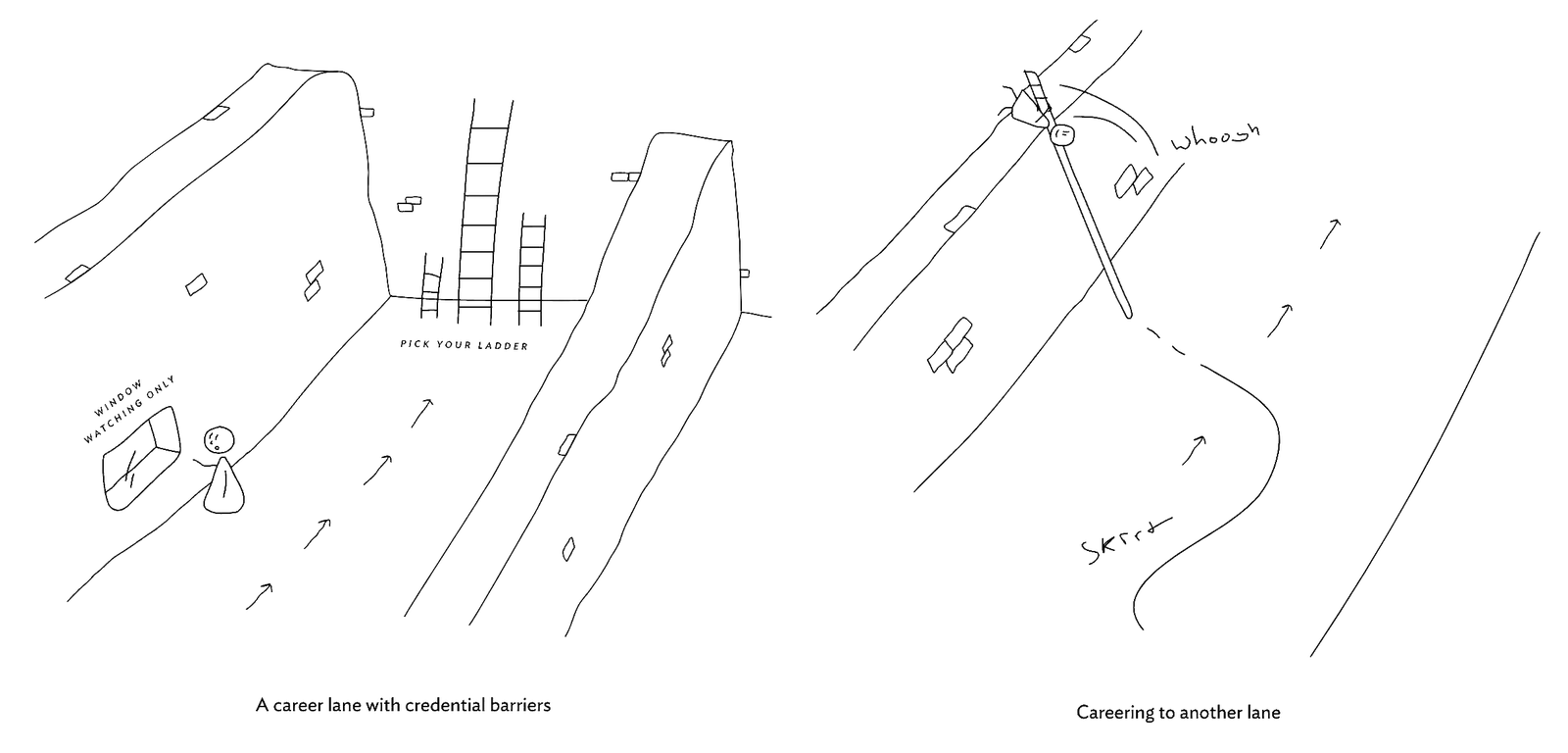
A career doesn’t have to be a finite ladder, with roles predetermined that you fit into. Instead, a career can be more like a map you draw that ties together your interests, what roles you play, and what environments you want to inhabit, so that you can move around it fluidly over time, maybe even continuing to draw the map as you go.
Careering sounds fun and natural, but also scary due to the uncertainty …
Norm: There is a lot of privilege in the ability to have time to think freely about the roles you’d like to create and play. We often wonder how to give more folks this opportunity.
We believe organizations need to empower individuals to explore roles. If people have the ability to switch roles, play more roles, and discover completely new roles, we ultimately believe it will benefit both organizations and individuals. If an organization doesn’t allow for inward mobility, they can both lose talent and lose money. Recruiting and onboarding new individuals is expensive.
Careering goes hand-in-hand with lifelong learning. We believe more educational moments should happen in our lives, especially in the workplace. Currently education in the US is bucketed from kindergarten through 12th grade and sometimes university, which can make it feel like learning ends then.

If someone says, “I want to change industries. But it’s actually a difficult thing to do!” — what actionable advice can you give them?
Yatú: Relationships allow for mobility. If more people are thinking that things are possible with you, and you surround yourself with people who believe in the possibilities of things, that’s a different potential future. The advice I’d give someone is to find and surround yourself with people who believe in you, who are honest, who are optimists — people who are willing to try things that haven’t been done before. If we look to architecture, every good architect has good relationships.
Norm: With design, it feels like if you can learn how to design one thing, then you can learn how to design anything. So start somewhere. We like to think about every work experience as a “careering waypoint” — it gives you a direction but doesn’t imply a final destination.
Which reminds me that back in our hackathon days, we would encourage people to “learn whatever language your best friend knows.” In order to pick up technical skills like computer programming, we believe it’s about finding folks, building those relationships, and learning whatever tools are available and shared to get started.
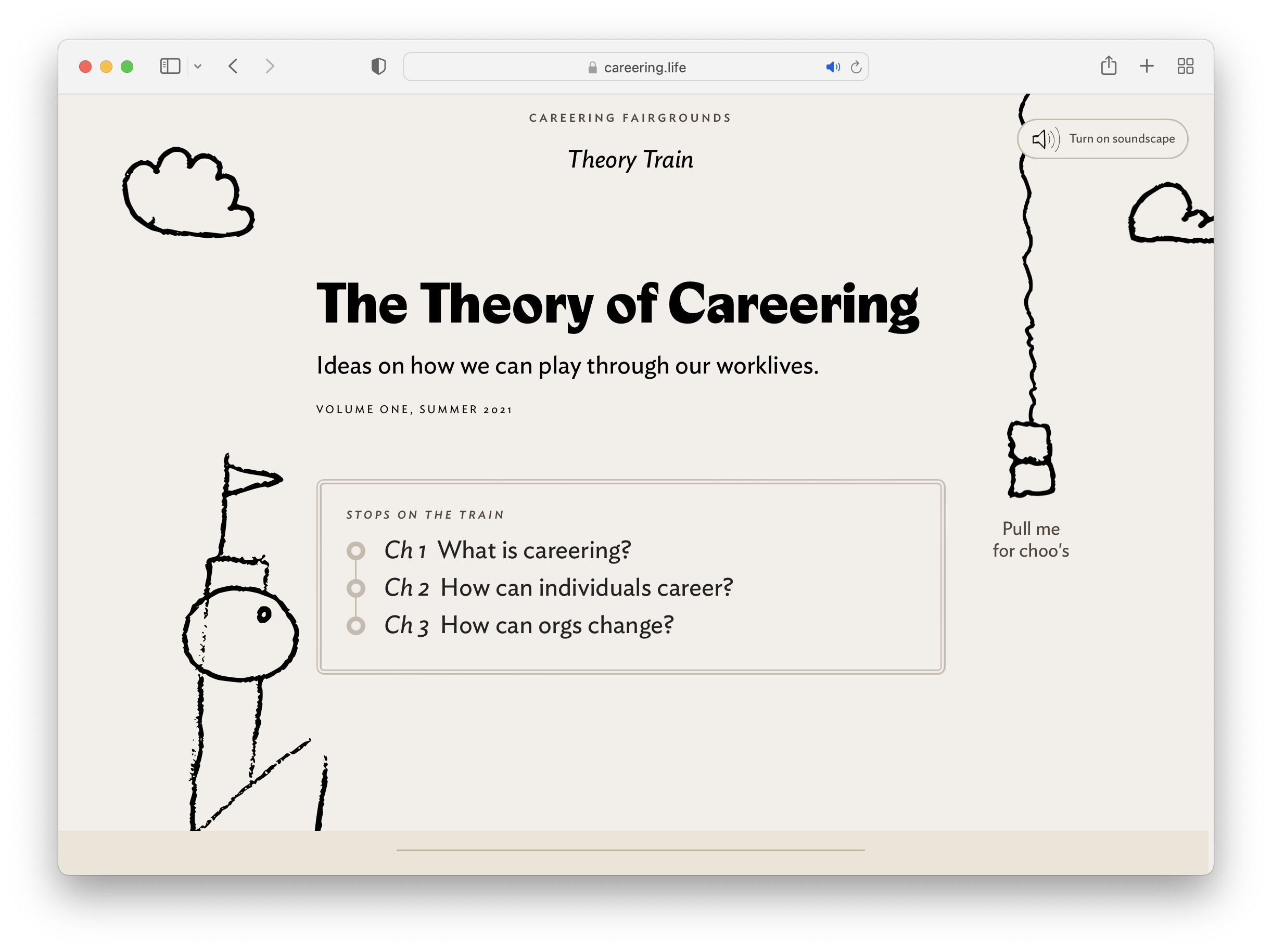
I noticed in 2022 you published this “Careering Theory” as a website: https://www.careering.life. It’s exciting to see everything together here.
Norm: Yeah, one other thing about Teal is that we have a lot of concepts. But whatever theories we have, it’s important we work through them by creating, such as publishing Careering as a theoretical artifact.
How has Teal explored careering?
Norm: As we were graduating, we started thinking about life after university and asked, “What are ways of living?” We were coming out of the tunnel that was the hackathon scene. We started finding other ways people were operating, such as having residencies. We also liked the idea of apprenticeships, or finding someone to work and learn with.
This is actually how one of our projects called “Leave Room for Thoughts” started in 2018. I found out about the concept of an artist residency, told Yatú, and our minds were completely blown —
Yatú: Yeah. We found out about residencies and said to ourselves, “Let’s do it.” I took a loan out to finance the project. We said, “We’ve got to find a space.” We only had one month before starting our full-time jobs, so we met up with our friend Benji in NYC and found a space within a week.
Norm: We had no plan other than spending a month together in a space.
Yatú: We didn’t know what we were doing. We were careering before we even defined it. The only thing we knew was that we wanted to do a residency.
For the residency, we hit up friends saying, “We have a space. You can come by and create whatever you want and we’ll help you make it happen.”
We had five people come in during that month. We documented it.
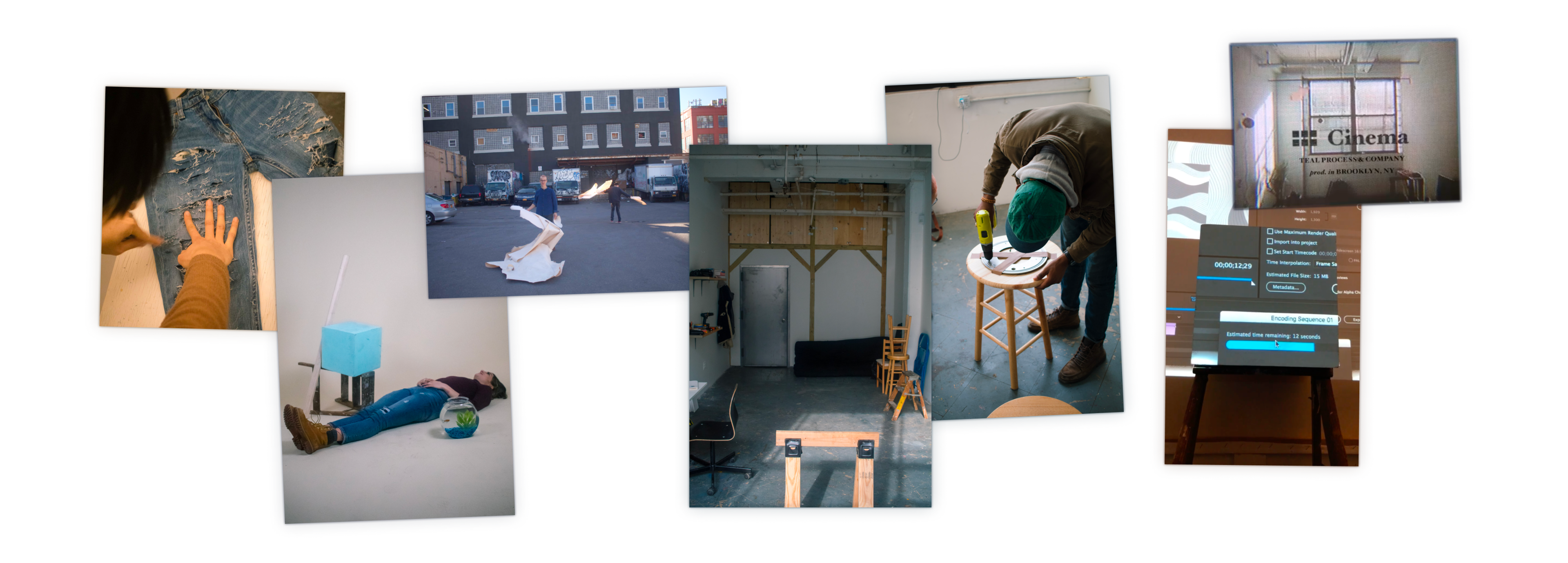
Like we did in our hackathon days, we did a lot of work simply for someone to have the supportive infrastructure because we know what it’s like to not have the infrastructure. When you’re no longer a student at a university, it’s easy to appreciate access to space and certain facilities, now that they are no longer available.
One other interesting thing to note is that every artist who came to the space was experimenting with something for the first time. They all ended up continuing whatever creative pursuits they began at the residency into their ongoing practice.
Norm: It was the last couple of days we were in New York and were reflecting, finishing things up and working with the artists. We were like, “What just happened?” And then we asked outselves, “Is this an institution??”
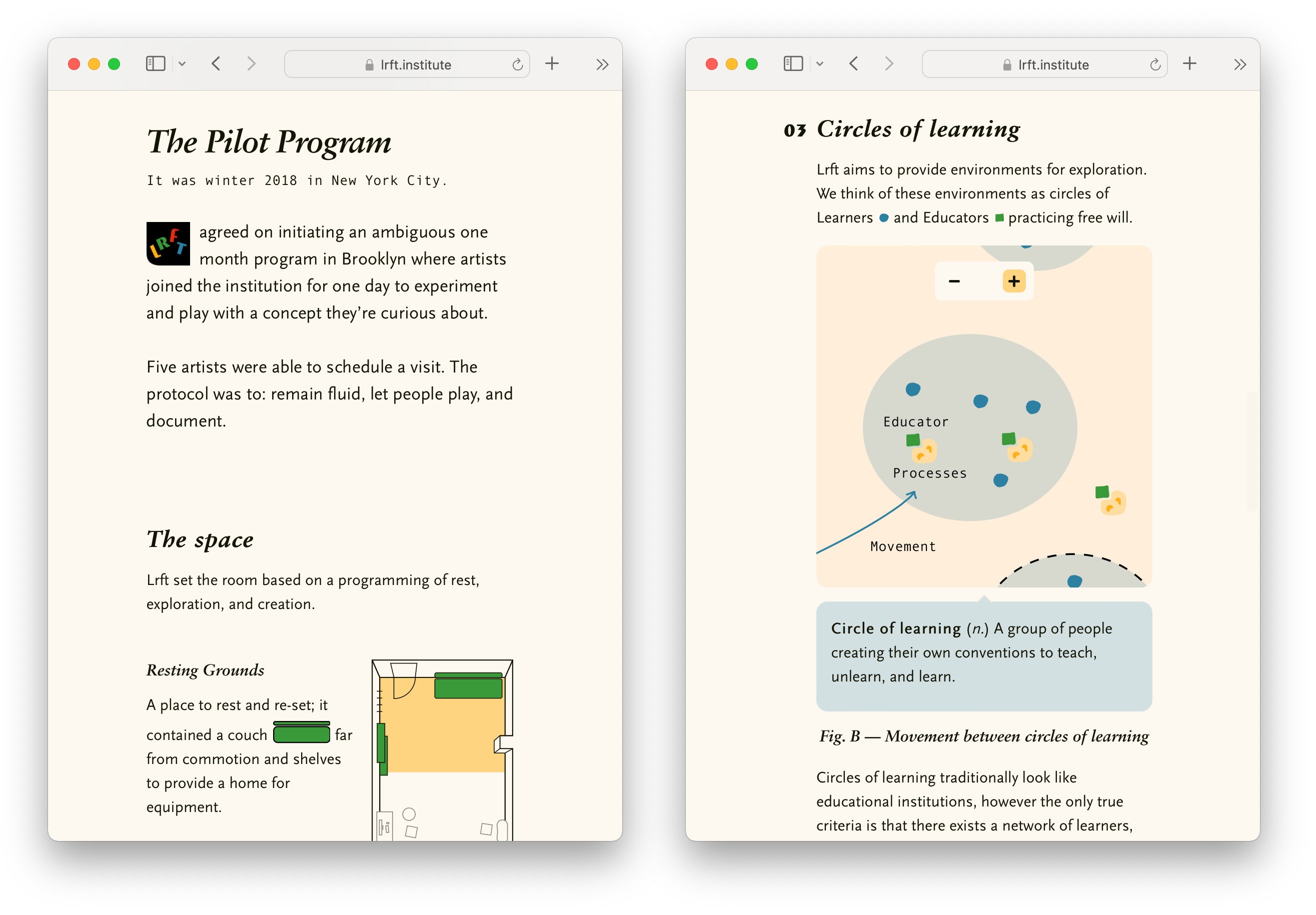
Yatú: Afterwards, we packaged the narrative of what happened as an online artifact: https://lrft.institute. Something happened in real life. It’s not just a website.

Norm: Four years later, we created a new program under the “Leave Room for Thoughts” umbrella called “Campus Complex,” a month-long educational experiment that unfolded across New York City.
Originally, we wanted to design a new physical campus for ideal learning, with beautiful rolling hills and all. But we soon realized the potential by utilizing existing infrastructure within NYC, so we brought together local organizations to create our own “Schoolscape.”
Yatú: We encouraged learners to freely explore the Schoolscape and document their journey along the way. In creating the theoretical artifact for this program, https://cc.place, our “Leave Room for Thoughts” institution was intentionally put to rest, or as we like to say “composted,” because we don’t believe that institutions should exist forever.
Can you tell me more about how Teal approaches publishing on the web?
Norm: We’ve always believed that websites can be more. Or that websites can just “be.” Generally, anything that people try to put in a box … it can be something else.
Back in our hackathon scene days, everyone was generally into startups and building digital products. In that sphere, websites were very functional. We realized we could play with the web in a way where we could still use what we learned from digital products. That’s why most of our online artifacts have special attention put into the navigation, for example.
All in all, we believe the purpose of websites can be just to exist. I would love to see more people creating and publishing things for the simple purpose of them existing. Websites can also be works of art.
On a more holistic level, we’ve been applying this lens of viewing websites to make beautiful tools more broadly. We call this “Couture Software” — or, bespoke tools for us and friends. An example we use internally we call “Concept Trust,” a tool that helps our process of creation.
Speaking of websites, the first project Teal did, “Gassed Up,” resulted in an online artifact you can explore: https://tealprocess.net/gassed-up.
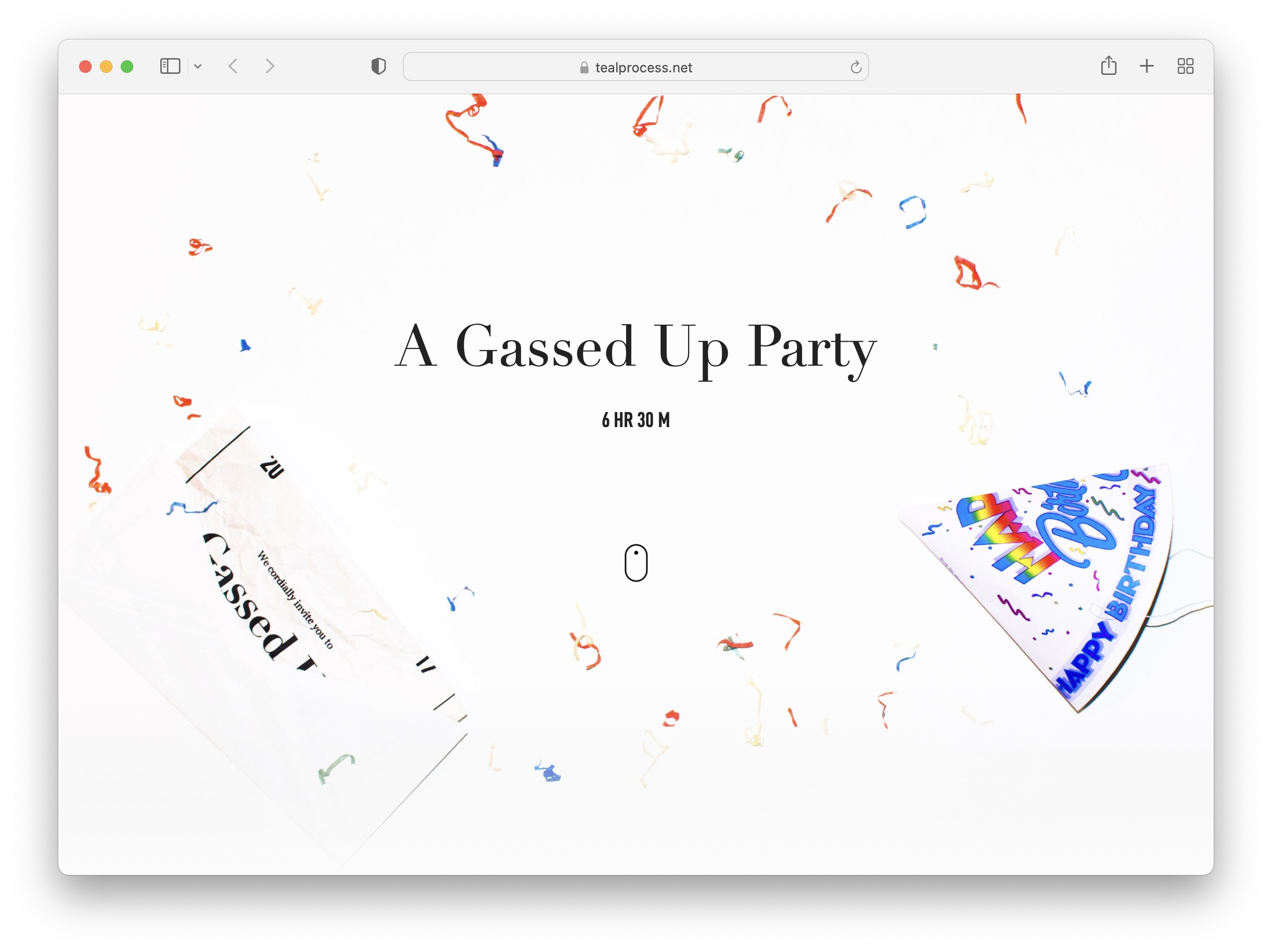
How did this website begin?
Yatú: Gassed Up started with a space. Everything always comes back to space. We used to work out of this co-working startup incubator. They had a room that could be used for events. We asked if we could use that space for one day to do a photoshoot. I had a vision.
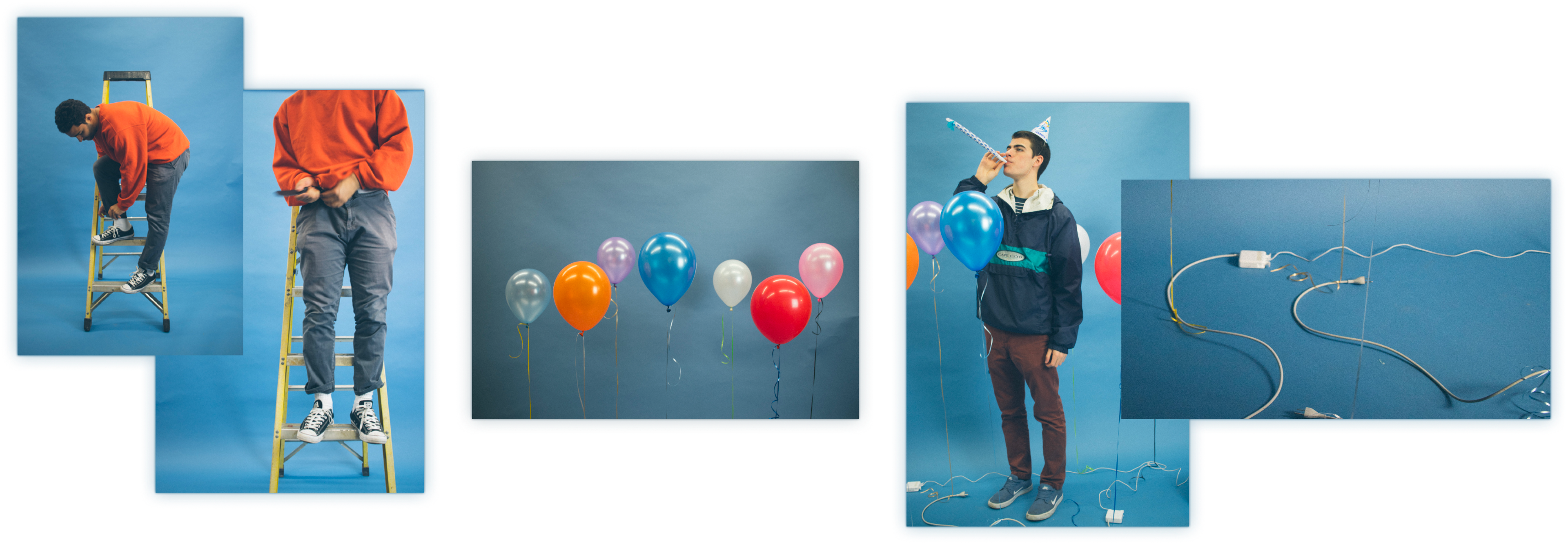
Norm: The day before the shoot we were looking through a book of Norman Rockwell paintings I had. There’s one with this guy looking at the balloons and mess he has to clean up, feeling defeated. There was something nice about the exciting party and the sadness simultaneously. I’m imagining early us, getting into art and design for the first time, thinking to ourselves, “Yeah, the contrast! The dichotomy!” So, we decided there had been this birthday party.
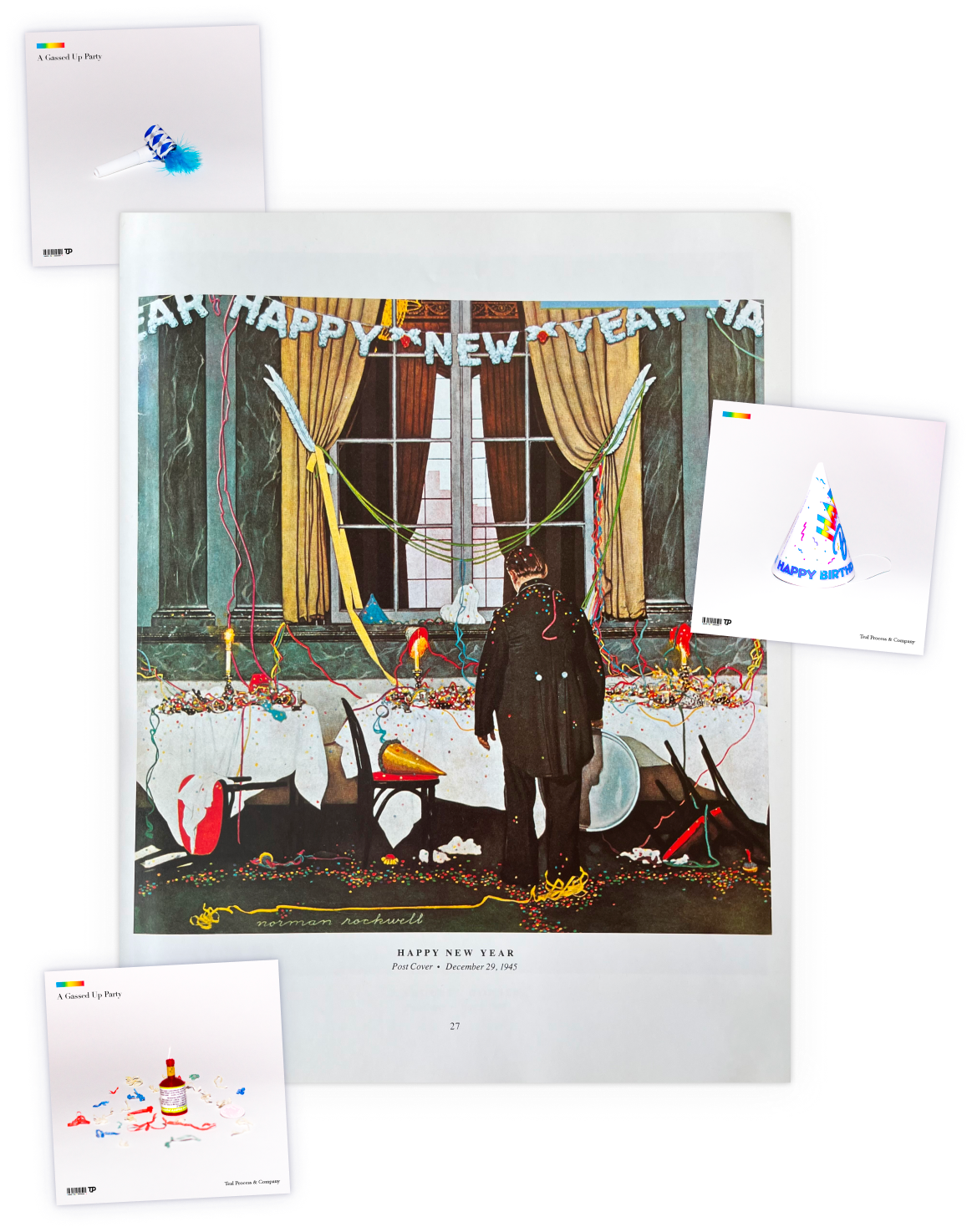
Yatú: We did the photoshoot, then did video. That’s when I first did web design.
Norm: As we were putting together the site, we wondered, “How do we weave this together?“ We realized we needed a story. What if we introduce the characters first? We had a nice photo of a ladder. We realized the ladder had to be the star!

Yatú: This ladder was called Giraffe. It was yellow.
Norm: We named the ladder first. Then we needed to identify the other characters — a couple humans and the balloons. We wondered, “Are we creating a universe here? Do these characters exist in a broader world?” So we chose names for ourselves. I chose “Norman” from the book that inspired some of the vibe.
Yatú: My character’s name was Xavier. I thought it was a cool name at the time. My mom actually wanted to call me this before I was born. For some reason “Xavier” never stuck for me. After a while, my friends started calling me “Yatú Sabe.” It had a nice ring. In Spanish, “ya tú sabe” means “you already know.” It’s a way of acknowledging someone’s inherent knowledge.
So, we started exploring names in our first project. And that’s how our names came to be. We sometimes call them our Teal names, but they’re the names everyone calls us now.
How do you work so well together?
Yatú: Trust is the most important thing. As long as we trust each other and we’re honest with each other, then problems are just opportunities for us to think things through.
We also have a lot of complementary traits. Norm is a pretty encouraging as a person. His encouragement enables me a lot. And I have the audacity to try things. We build on each other. We ladder each other’s thoughts.
Norm: It all comes back to the ladder.
One reason we’re able to ladder each other’s thoughts so well is that we take each other’s very ridiculous ideas very seriously. We’re like, “Okay, if that was a thing, then…” We build on each other’s ideas by validating and extending them further.
Somehow, Yatú and I are able to align on something that feels grand and wonderful to go explore. And then we go explore it together.

What’s Teal’s operational model?
Norm: Ideas start as concepts, get nourished into experiments, and then are published as artifacts. Yatú came up with this funnel. There are way more concepts than there are artifacts. And it takes a long time to even go from experiment to artifact.
Yatú: This operational model isn’t perfect, but it’s been working for us.
Norm: It helps us align on strategy. Questions like, “How much time are we trying to spend on this?” or “What level are we trying to take this to?”
We also landed on three formats: digital, physical, and theoretical. We work at the intersection of those, which is everything.
Note: This conversation was originally conducted in 2021, edited in 2022, and published in 2023. As Teal Process & Company says, “sometimes time finds us rather than us finding the time.”
Currently, Norm & Yatú are careering as Artist-Founders by playing with USBs and the world of hardware connectivity.
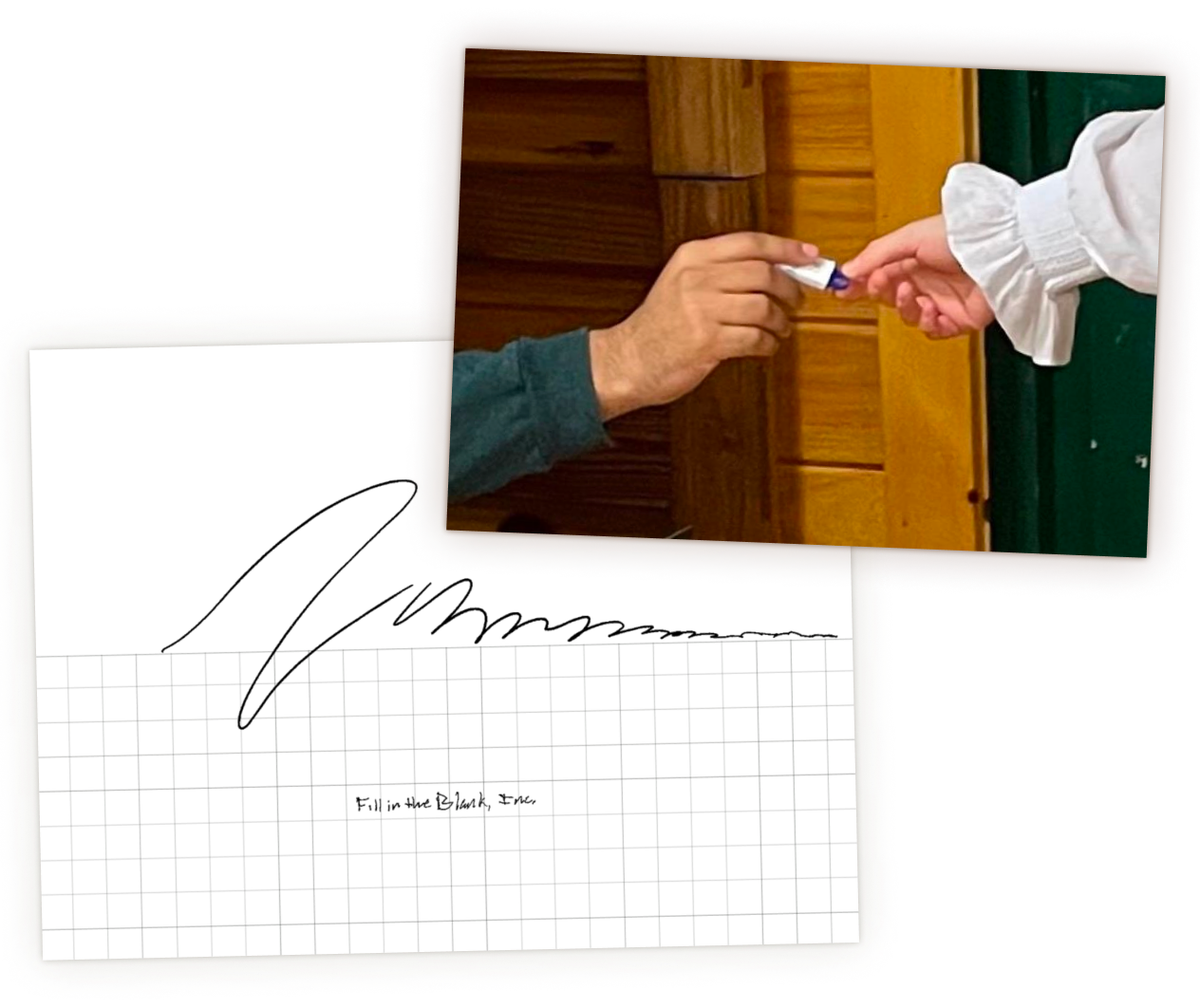
- Name
- Teal Process & Company
- Vocation
- Open Question

Some Things
Pagination

